What is Blue Mountain Coffee? introduction to the processing process of the taste characteristics of Blue Mountain Coffee beans
Coffee taste delicate, sweet, sour, bitter perfect match, taste is very mellow and delicate, is the world's most mellow coffee, this is the flavor characteristics of authentic Blue Mountain coffee, but also one of the most expensive coffee in the world.
The aroma of Ethiopian coffee, dark chocolate of Colombian coffee, citrus and berry flowers of Panamanian summer, etc., the flavor of coffee varies from country to country, which is caused by the growth of trace elements in each country. The coffee flavor produced by the Blue Mountains of Jamaica is also unmatched by other producing countries. For example: rose summer coffee in Ethiopia and Panama, the flavor is not the same, Blue Mountain coffee is also the same, grown in other countries, the flavor is different.

Arabica varieties of coffee are mostly boutique coffee, more picky about the growing environment. Jamaica has a tropical rain forest climate, with abundant rainfall all the year round, moist air and cloudy mountains, which can shade coffee trees. Blue Mountain is located in the coffee belt between the north and south latitudes of 25 degrees, with a unique geographical location. The average elevation of the Blue Mountain is higher, the highest elevation is as high as 2256 meters, coffee is generally planted below 1700 meters coffee trees are suitable for planting on the slope, the terrain is conducive to drainage. Plenty of light during the day, coupled with the local fertile volcanic soil layer, let the coffee grown here absorb full nutrients, and fully transformed into aroma substances, creating ultra-high quality blue mountain coffee beans.
Jamaica Blue Mountain Coffee production area
Not all the coffee from Blue Mountain is called Jamaican Blue Mountain Coffee. Although Blue Mountain Coffee enjoys a unique geographical environment, it is still very strict with Blue Mountain coffee beans. Certified by the Jamaica Coffee Industry Council (CIB), the authentic Blue Mountain Coffee producing areas refer to the four eastern districts: St. Andrew, St. Thomas (St.Thomas), St. Mary (St.Mary) and Portland (Portland), which happen to be the foothills of the Blue Mountains. At an altitude of 1000-1700 meters, the area is only about 6100 hectares. Only when planted in this area and at an altitude of 1000-1700 meters, is authentic Blue Mountain Coffee. What is planted outside this area cannot be called Blue Mountain Coffee. Thus it can be seen that the Jamaican government has a very strict certification for Blue Mountain Coffee. CIB will regularly train coffee farmers on their planting techniques, how to harvest coffee fruits correctly, and improve coffee processing techniques on this basis. The Jamaican Coffee Bureau has set strict standards to ensure the quality of Blue Mountain coffee, such as areas of origin, planting techniques, picking, roasting and other methods.

Jamaica Blue Mountain Coffee is the only coffee producing area that uses buckets to hold raw beans, while other producing areas are packed in gunny bags. The symbol of the rainforest water frog in the barrel means that Clifton Manor meets the Sustainable Agriculture system Standards and is certified by the Rainforest Alliance Rainforest Alliance.
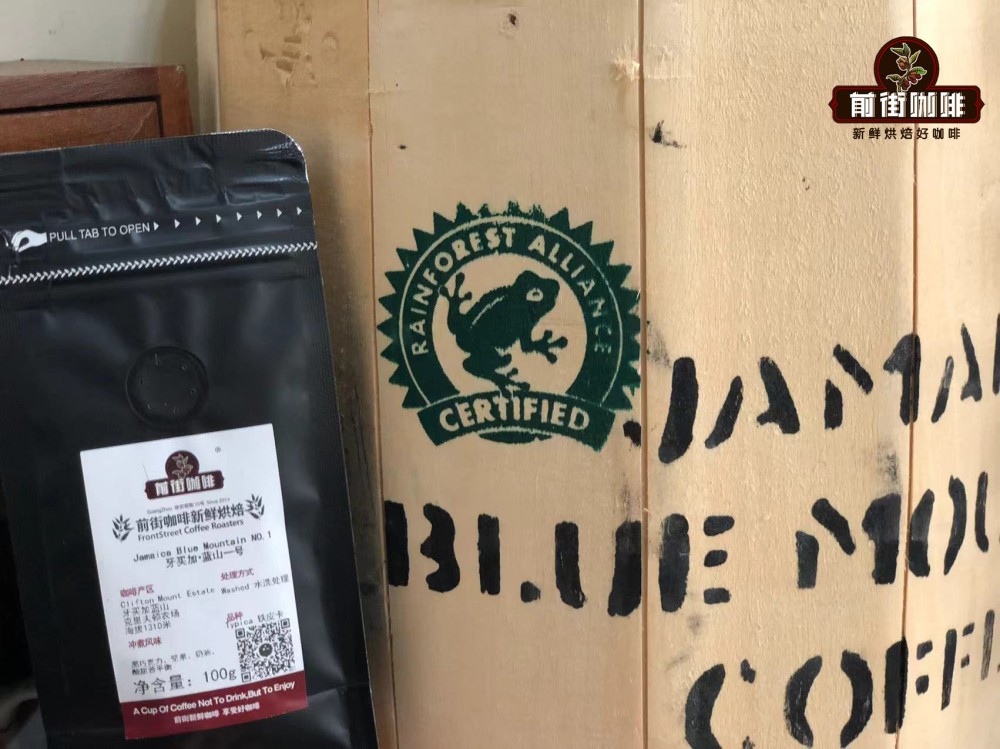
Classification of Blue Mountain Coffee
The classification of Blue Mountain Coffee has two characteristics, one is according to the size of coffee beans, the other is according to the altitude.
According to the size of the coffee, Jamaica Blue Mountain is divided into four grades, the quality from high to low is: NO.1, NO.2, NO.3 and PB,PB (peaberry) are round beans. The basic standard of Lanshan No. 1 coffee raw beans from Qianjie is beans with more than 17 mesh, defect rate less than 2%, moisture content about 13%, etc., which looks like full grains, uniform size and blue-green raw beans. The flavor is both sour, sweet, bitter, fragrant and mellow.
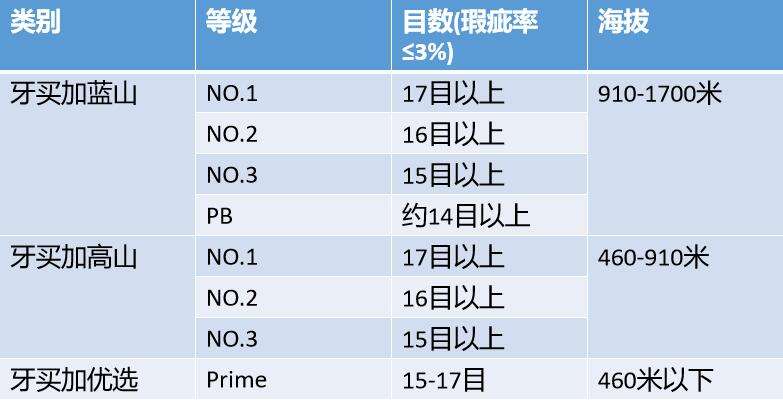
The blue mountain one coffee beans purchased on Qianjie come from the highest grade blue mountain coffee of Clifton farm. The raw beans are 17x18 mesh size, the defect rate can not be more than 2%, the moisture content is about 13%, and the particles are neat, full and uniform.
Clifton Manor
Clifton Manor, the oldest estate in Jamaica, has grown coffee since the mid-18th century and has grown into one of the largest estates in Jamaica in 1900. In 1978, the Sharp family took over the management of Clifton Manor, improving the coffee growing environment in the estate and introducing advanced equipment to establish BMCP, currently the largest coffee processing plant in Jamaica. Clifton Manor has always believed in the concept of environmental protection. A large amount of money has been invested in the construction of solar power stations and sewage treatment plants in Clifton Manor, and the peel has been fermented into organic fertilizer.
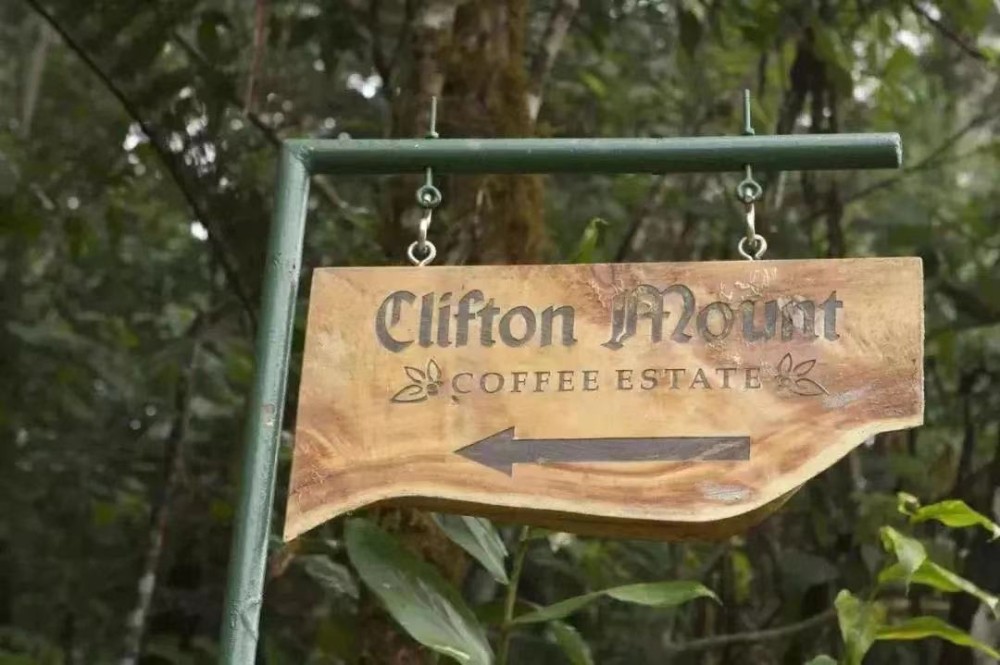
Blue mountain iron card variety
Jamaica Blue Mountain is one of the oldest Arabica varieties, which has a long history, but its taste is the best, but its disease resistance is weak, so the yield is low, which is one of the reasons for the high price of Jamaican Blue Mountain coffee.
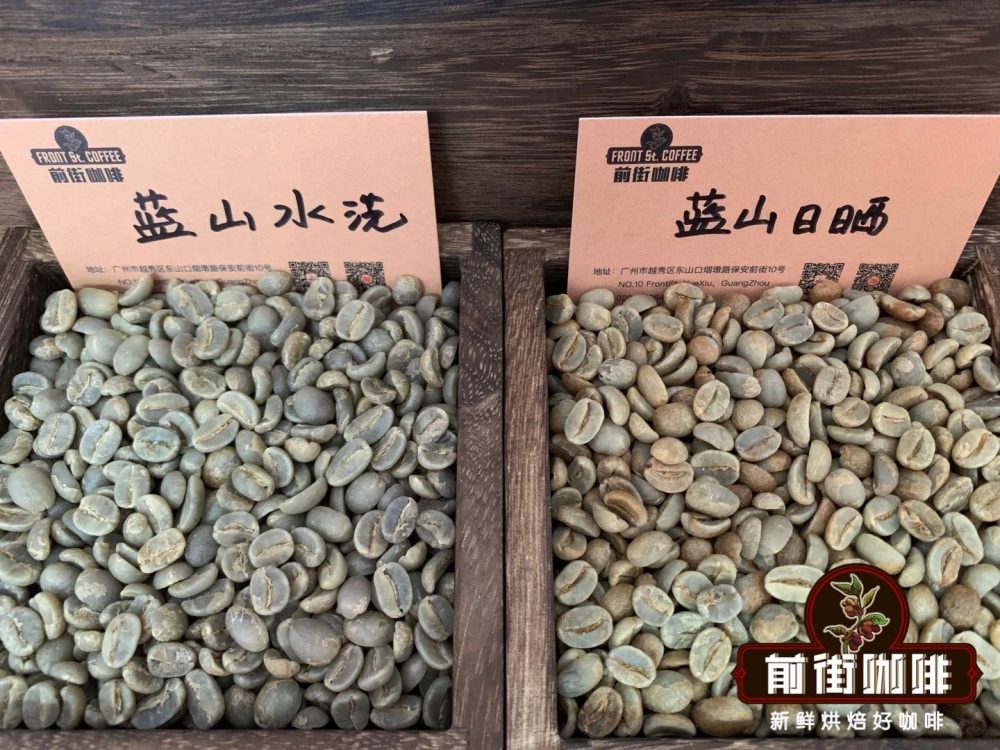
The tree shape of the iron pickup is tall, and there will be red copper leaves at the top, so it is often called red top coffee. Iron pickup has a pure and elegant flavor, but its physique is weak, disease resistance is poor, and the yield of a single plant is very small. This is also the reason why there are fewer and fewer varieties of tin card coffee. It has been more than 200 years since iron pickup was introduced to Blue Mountain in the 18th century, and the iron pickup of Blue Mountain has also adapted to the local island type and evolved a better ability of disease resistance, among which the coffee berry disease will be much stronger than the general tin card.
Treatment of blue mountain coffee beans
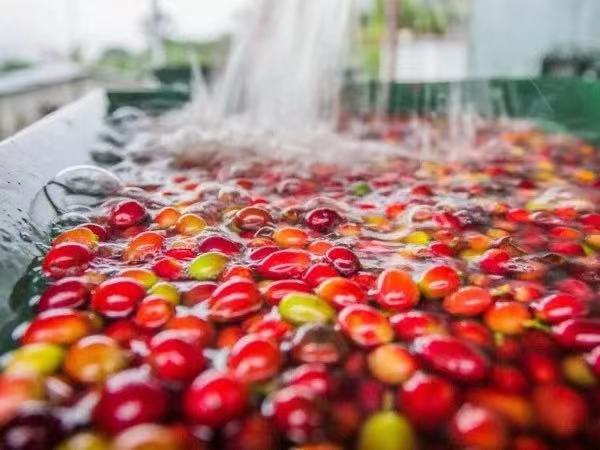
Blue Mountain Coffee was initially treated with traditional water washing, but with the trend of the boutique coffee market, Clifton Farm first tried to launch the Blue Mountain batch of sun treatment in 2019. But Qianjie believes that the flavor of washed Blue Mountain coffee is clearer, and it is also the most classic blue mountain flavor. If you taste it for the first time, you can start with washed Blue Mountain Coffee.
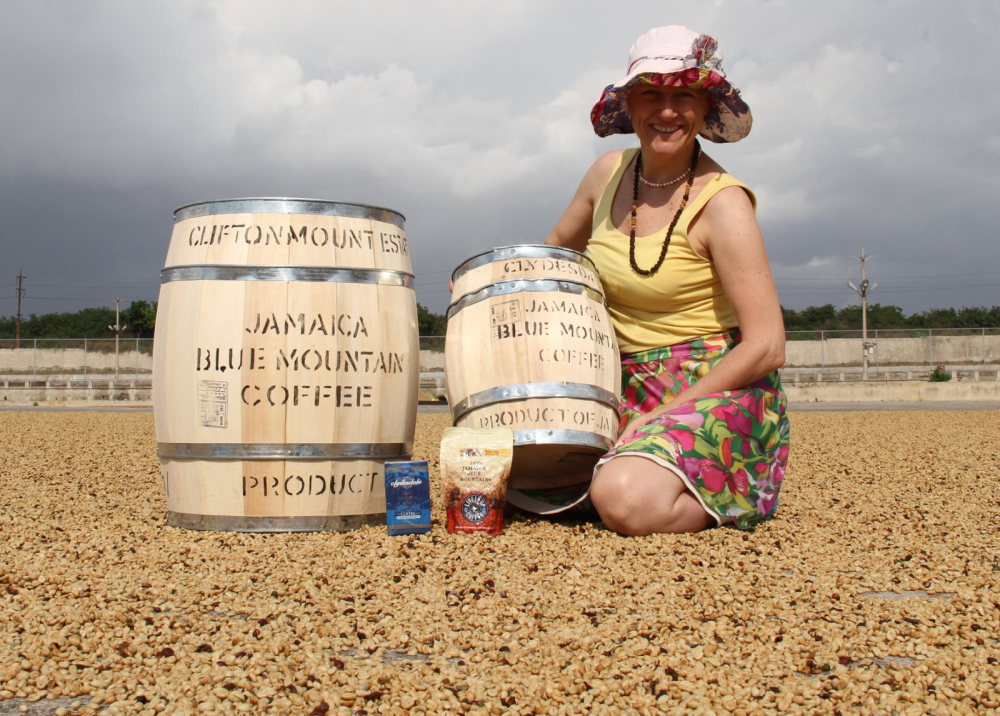
Coffee grown in the Blue Mountains usually ripens between June and November every year, and local women who are familiar with the terrain are arranged to pick coffee cherries of the right maturity on steep slopes. The picked fresh coffee cherries are manually screened for immature and overripe fruits, then peeled, fermented directly for 12-18 hours, and then brushed in clean water in order to remove the pectin layer outside the raw beans. Finally, spread out the half-dry and half-wet coffee beans to dry. Every step should be strictly mastered, otherwise it is easy to affect the quality of Blue Mountain Coffee. Washing treatment has more steps to pick out defective beans, so the flavor of Blue Mountain coffee is clearer.
Parameters for brewing Jamaican Blue Mountain Coffee on the front street:
Blue Mountain Coffee goes through strict checkpoints from planting, harvest to output, and roasting is also a key link. Qianjie bakers hope to restore the more classic Blue Mountain flavor, using medium-to-deep baking. After baking at high temperature, the appearance of coffee beans has been caramelized, and the obvious aroma of baked bread can be smelled. On brewing, Qianjie formulates the extraction parameters according to the characteristics of Lanshan No. 1 coffee, and you can adjust it according to your ideas and your own needs. Due to the deep roasting degree of Lanshan No. 1 coffee and the strong water absorption of coffee powder, thicker grinding degree and lower water temperature will be chosen here in order to avoid excessive extraction. In addition, Qianjie hopes that Lanshan has a more mellow taste and will choose a filter cup with a slow flow rate, such as the KONO filter cup.
The parameters for brewing Blue Mountain No.1 coffee in Qianjie store are: KONO filter cup, water temperature of 88 degrees Celsius, ratio of powder to water at 1:15, 15g coffee powder, grindness (75% of standard sieve 20), and three-stage extraction.
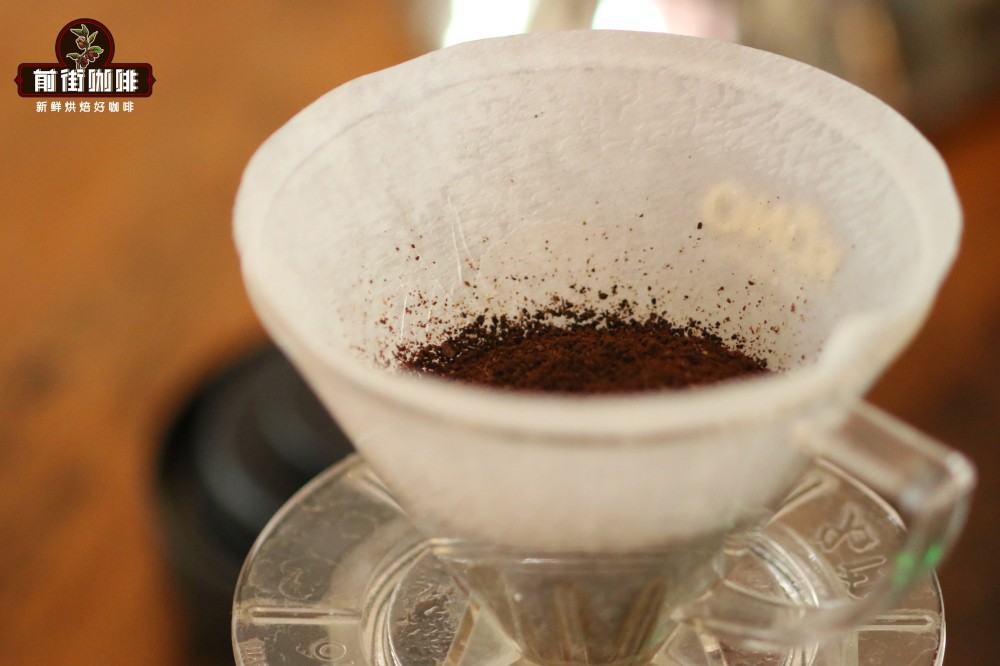
The use of segmented extraction, with twice the amount of coffee powder water for steaming, that is, 30 grams of water for 30 seconds, and the reason for the need for steaming process is to make coffee powder can discharge the internal carbon dioxide gas, so that the latter stage of the extraction is better stable. When the small water is injected around the circle to 125 grams, the injection will be stopped until 225 grams, then the filter cup will be removed after the dripping of the filter cup, and the extraction time will be 2 minutes 39 grams. Next, pick up and shake the whole cup of coffee, then pour it into the cup and taste it.
[front Street Sun Blue Mountain Coffee] slight acidity of berries, reminiscent of black plums and mulberries, with a good overall balance, dark chocolate and nutty flavors, with a slight sense of fermentation. [Qianjie washed Blue Mountain Coffee] dark chocolate, nutty flavor, creamy smooth taste, sweet and sour balance.

Qianjie coffee brewing suggestion:
If you want to brew a delicious cup of coffee, Qianjie believes that the freshness of coffee beans is a very important part of brewing. The coffee beans shipped in Qianjie are all roasted within 5 days. The purpose of Qianjie roasting is "freshly roasted coffee", so that every guest who places an order is the freshest coffee when he receives the coffee. The bean cultivation period of coffee is about 4-7 days, so when the guest gets it, it is the time when the flavor is the best.
For those who need to be ground, Qianjie warmly reminds you that if the coffee beans are ground in advance, there is no need to raise the beans, because in the process of transportation, the pressure caused by carbon dioxide in the package can also make the coffee flavor round. so you can drink a cup of coffee as soon as you receive the coffee powder. But the coffee powder needs to be brewed in time, because the coffee powder oxidizes more quickly after contact with the air, that is to say, the flavor of the coffee will dissipate more quickly, and the flavor of the coffee is not so good. Therefore, Qianjie suggests buying whole beans, grinding and flushing now, so that we can better taste the flavor of coffee.
Professional coffee knowledge exchange more coffee bean information please follow the coffee workshop (Wechat official account cafe_style)
For more boutique coffee beans, please add private Qianjie coffee on Wechat. WeChat account: qjcoffeex
Important Notice :
前街咖啡 FrontStreet Coffee has moved to new addredd:
FrontStreet Coffee Address: 315,Donghua East Road,GuangZhou
Tel:020 38364473
- Prev

Hot or cold Yega Chefee coffee bean flavor characteristics brewing manipulation temperature
Would you like your coffee hot or cold? This depends on personal preferences, hot Yega Chuefei flavor aroma will be more intense and prominent, sweet and sour feeling will be more obvious, while cold Yega Sheffield coffee will be different, its bitterness will rise, sweetness will decrease, the flavor will be less obvious. Cold Yega Xuefei
- Next
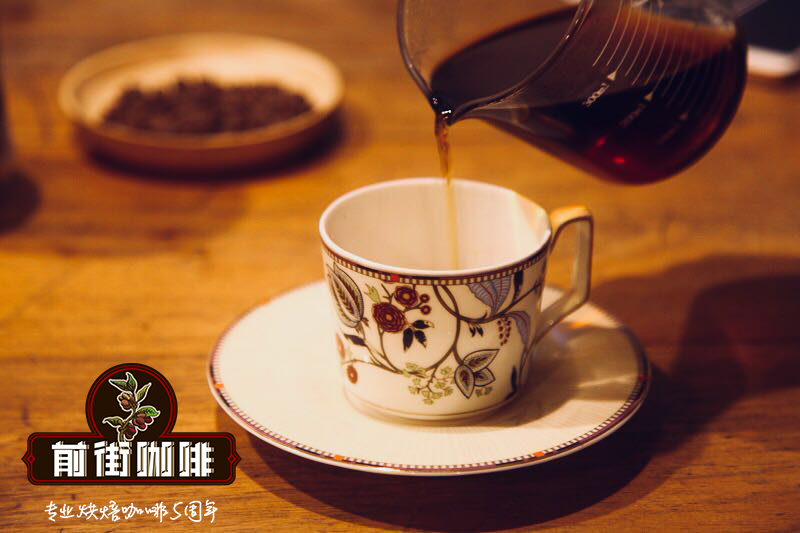
Where is the most authentic cat shit coffee bean from? introduction to the flavor characteristics of Kopi Luwak.
Kopi Luwak originated in Indonesia. It is said that an Indonesian man found coffee beans in cat droppings, then took them home to wash them, roasted them in a pot, and boiled coffee beans with very special aroma and unique mellow taste. So tell everyone the news. This is cat shit coffee.
Related
- Beginners will see the "Coffee pull flower" guide!
- What is the difference between ice blog purified milk and ordinary milk coffee?
- Why is the Philippines the largest producer of crops in Liberia?
- For coffee extraction, should the fine powder be retained?
- How does extracted espresso fill pressed powder? How much strength does it take to press the powder?
- How to make jasmine cold extract coffee? Is the jasmine + latte good?
- Will this little toy really make the coffee taste better? How does Lily Drip affect coffee extraction?
- Will the action of slapping the filter cup also affect coffee extraction?
- What's the difference between powder-to-water ratio and powder-to-liquid ratio?
- What is the Ethiopian local species? What does it have to do with Heirloom native species?

